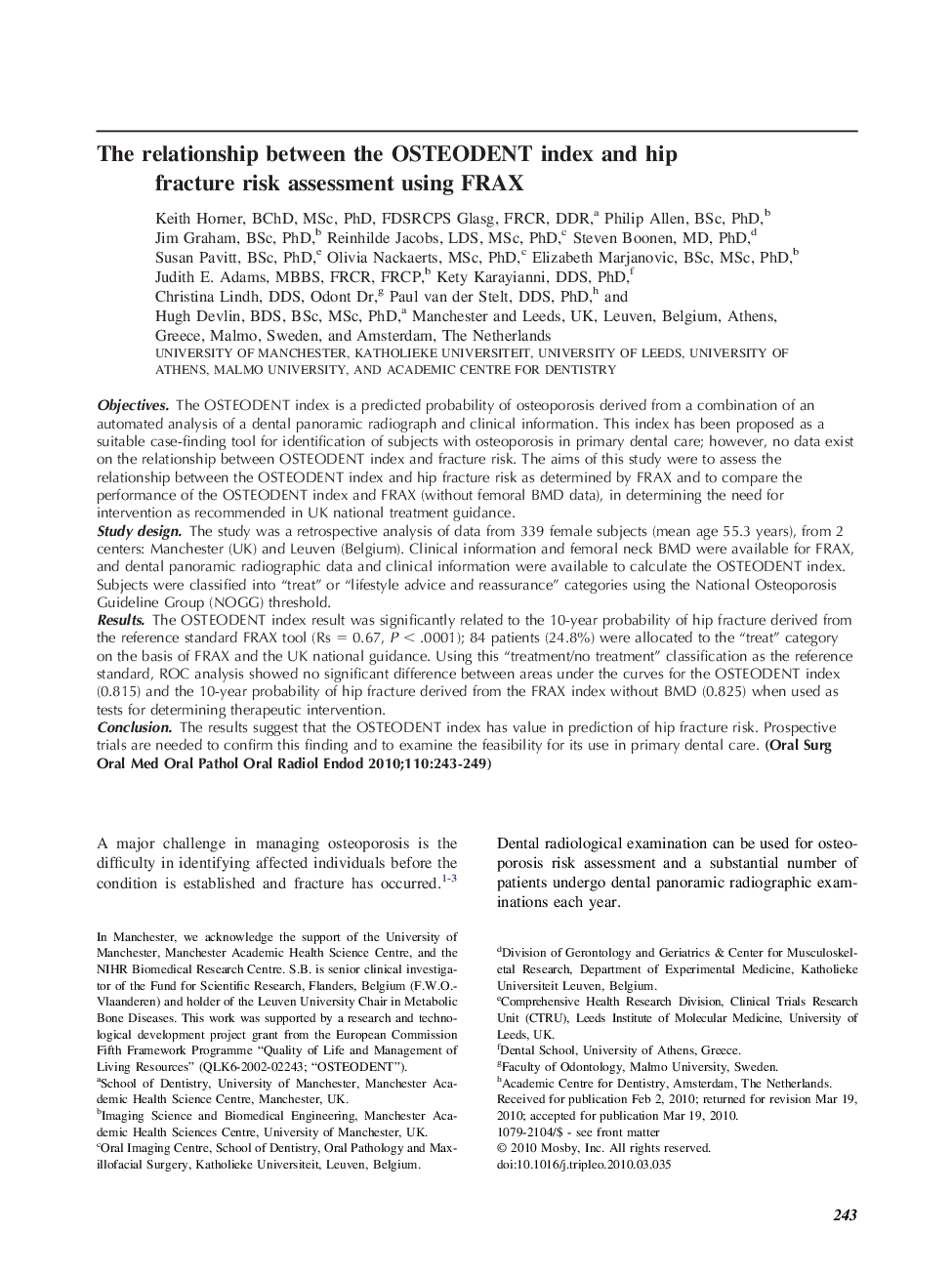| Article ID | Journal | Published Year | Pages | File Type |
|---|---|---|---|---|
| 3167523 | Oral Surgery, Oral Medicine, Oral Pathology, Oral Radiology, and Endodontology | 2010 | 7 Pages |
ObjectivesThe OSTEODENT index is a predicted probability of osteoporosis derived from a combination of an automated analysis of a dental panoramic radiograph and clinical information. This index has been proposed as a suitable case-finding tool for identification of subjects with osteoporosis in primary dental care; however, no data exist on the relationship between OSTEODENT index and fracture risk. The aims of this study were to assess the relationship between the OSTEODENT index and hip fracture risk as determined by FRAX and to compare the performance of the OSTEODENT index and FRAX (without femoral BMD data), in determining the need for intervention as recommended in UK national treatment guidance.Study designThe study was a retrospective analysis of data from 339 female subjects (mean age 55.3 years), from 2 centers: Manchester (UK) and Leuven (Belgium). Clinical information and femoral neck BMD were available for FRAX, and dental panoramic radiographic data and clinical information were available to calculate the OSTEODENT index. Subjects were classified into “treat” or “lifestyle advice and reassurance” categories using the National Osteoporosis Guideline Group (NOGG) threshold.ResultsThe OSTEODENT index result was significantly related to the 10-year probability of hip fracture derived from the reference standard FRAX tool (Rs = 0.67, P < .0001); 84 patients (24.8%) were allocated to the “treat” category on the basis of FRAX and the UK national guidance. Using this “treatment/no treatment” classification as the reference standard, ROC analysis showed no significant difference between areas under the curves for the OSTEODENT index (0.815) and the 10-year probability of hip fracture derived from the FRAX index without BMD (0.825) when used as tests for determining therapeutic intervention.ConclusionThe results suggest that the OSTEODENT index has value in prediction of hip fracture risk. Prospective trials are needed to confirm this finding and to examine the feasibility for its use in primary dental care.
